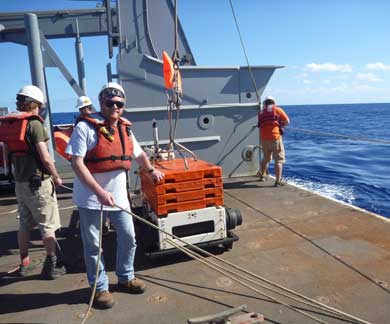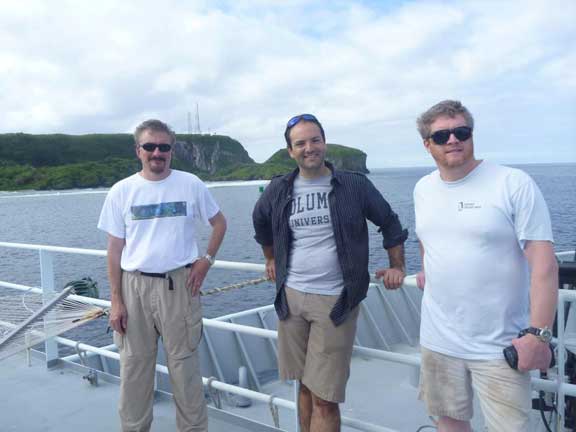National Science Foundation Selects IRIS to Manage the Ocean-Bottom Seismic Instrument Pools Program
IRIS is pleased to announce that it has been selected by the National Science Foundation (NSF) to manage the Ocean-Bottom Seismic Instrument Pools (OBSIP) program through the formation of an OBSIP Management Office (OMO). The OMO will manage OBSIP operations and serve as an interface between NSF, the Institutional Instrument Contributors (IICs), research principal investigators (PIs), the broader OBS research community, and the University-National Oceanographic Laboratory System (UNOLS). IRIS' OMO Project Manager Brent Evers will lead this effort. IRIS looks forward to continuing its work with NSF's Marine Geology & Geophysics Program and the OBSIP community to assist in the development of expanded interactions between marine and land-based observations, foster cooperation and advance geophysical research.
 Currently underway aboard the R/V Thompson, Doug Wiens of Washington University in St. Louis, Missouri, is leading a team to deploy a set of broadband ocean-bottom seismometers (OBSs) contributed by Scripps Institution of Oceanography, Lamont-Doherty Earth Observatory, and Woods Hole Oceanographic Institution. Located along the Mariana Trench in the western Pacific Ocean, this study will image the distribution of serpentinite in the upper mantle and explore the relationships between serpentinization and seismicity in a subduction zone.
Currently underway aboard the R/V Thompson, Doug Wiens of Washington University in St. Louis, Missouri, is leading a team to deploy a set of broadband ocean-bottom seismometers (OBSs) contributed by Scripps Institution of Oceanography, Lamont-Doherty Earth Observatory, and Woods Hole Oceanographic Institution. Located along the Mariana Trench in the western Pacific Ocean, this study will image the distribution of serpentinite in the upper mantle and explore the relationships between serpentinization and seismicity in a subduction zone.
OMO Project Manager Brent Evers (foreground)
prepares to deploy a broadband OBS aboard the
R/V Thompson along the Mariana Trench in the
western Pacific Ocean.
From left to right: Doug Wiens (Washington University in St. Louis), David Gassier (Columbia University), and Brent Evers (IRIS Consortium) aboard the R/V Thompson as it leaves Guam Harbor.



